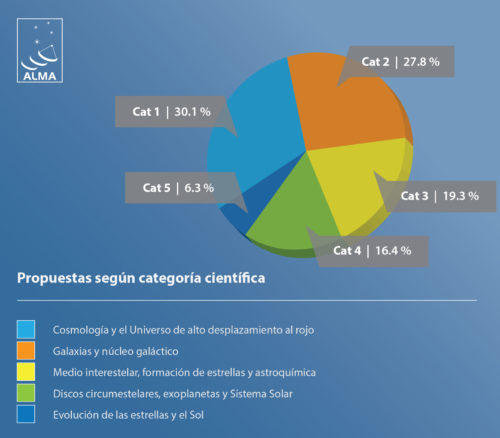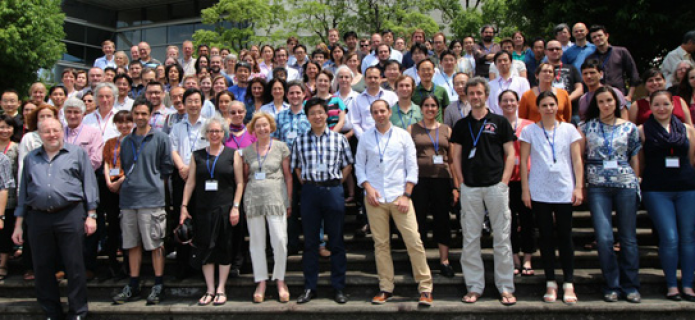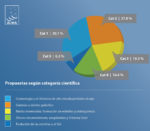New projects selected for the ALMA Cycle 3 Early Science Observations
The scientific assessment of the 1578 science proposals submitted for ALMA Early Science Cycle 3 has been completed. The Proposal Review meeting –chaired by Anneila Sargent from Caltech- took place in Osaka, Japan, in June involving 97 science assessors from around the world, who evaluated the expected scientific value of these proposals. A total of four hundred and one (401) highly ranked projects were selected for observing in the ALMA Early Science Cycle 3.
The Principal Investigators have been notified of the outcome of the Proposal Review Process. The selected projects cover a wide range of scientific objectives and are distributed across the five broad ALMA science categories as shown in Figure 1.

Credit: ALMA (ESO/NAOJ/NRAO)
Cycle 3 science observing is scheduled to begin early October 2015 and will span one year. At least 48 antennas (1) will be available at all times for science observations in this new cycle.
Today all of the 66 antennas have been delivered to the project and are located at 5,000 meters altitude, equipped with eight receivers. ALMA started scientific operations on September 30, 2011 with 16 antennas. Even at a quarter of its capacity, ALMA became the best telescope of its kind. From that time forward, thanks to its potent resolution, ALMA produced revolutionary images such as planetary genesis on HL Tauri and the Einstein ring on SDP.81 thanks to the effect of a gravitational lens, results that are opening new frontiers in astronomy.
Note
(1) For Cycle 3 will be available thirty-six 12-m antennas in the main array, ten 7-m antennas and two 12-m antennas (for single-dish maps) in the Morita-san Array.
More information
Information about the technical capabilities of ALMA, how to apply for observing time, how to access ALMA data, and links to a variety of official ALMA documents and tools can be found in the science portal.
ALMA is a partnership of ESO (representing its member states), NSF (U.S.) and NINS (Japan), along with NRC (Canada), NSC and ASIAA (Taiwan), and KASI (South Korea), in cooperation with the Republic of Chile. The Joint ALMA Observatory is operated by ESO, AUI/NRAO and NAOJ.
Contact:
Valeria Foncea
Education and Public Outreach Officer
Joint ALMA Observatory
Santiago, Chile
Tel: +56 2 467 6258
Cell: +56 9 75871963
Email: [email protected]

